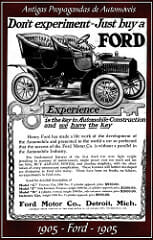
Last week, when I opened my mailbox, I found a relic from a bygone era. It’s one of those things that shouldn’t really exist anymore outside of a marketing museum, and yet somehow does—a great testament to the power of tradition, perhaps. I am speaking, of course, of the printed business phone directory—the famous “yellow pages”.
I have been told that in ancient times—i.e., before the internet—people would use this printed directory to look up the contact information of local businesses they wanted to get in touch with. Now, I think it is mostly used as a prospecting tool by marketing consultants like myself, since it is a great way to find out which businesses in the area have a decent marketing budget (printed directory advertising isn’t cheap, after all), but are not using that budget very effectively.
It’s also a great place to find many examples of terrible small business advertising. In fact, just about every banner ad and full-page ad in printed phone directories makes at least two or three of the same mistakes. A yellow-page style printed directory makes these mistakes painfully obvious due to the fact that all competing businesses are listed right next to each other, whereas in other formats—such as online banner ads or newspaper ads—they might not be quite as evident.
Whether or not you’re spending money on banner ads in printed directories, studying these mistakes—and then examining your own advertisements with a critical eye—can help you avoid some potential errors that reduce the effectiveness of your ads. So, without further ado, let’s take a look at the five essential ingredients of a terrible small business ad (and how to avoid them).
Irrelevant headline
One of the most important parts of any ad is the headline. It’s the first thing people will see when they look at the ad, and what it says will determine whether or not they even read the rest of the ad. A common characteristic among ineffective ads is that they have a headline that is irrelevant—in other words, it doesn’t communicate anything about who the target audience is for the ad or what type of product or service the ad is promoting.
Here’s a few examples of irrelevant headlines (these are all actual ad headlines I found in the yellow pages):
- “Don’t Compromise”
- “Our Family Serving Your Family”
- “A Part of Your Community, a Part of Your Life”
- “No Job Too Large or Too Small”
See what I mean? All of these headlines could apply to any type of business and any audience. The last one is my personal favorite—it was for a tree trimming company. It makes me want to call them up and tell them I have 3,000 acres of heavily forested land that I need cleared by next month, just to see if they will concede that there are in fact jobs that are too big for them.
When you write the headlines for your ads, be sure to mention your target audience, what you do, your value proposition, and some kind of hook, if possible. For example, a local CPA with great online reviews who has many years of experience might have an ad with the headline “My Town’s Top-Rated Small Business CPA” and the sub-headline “20th Anniversary Sweepstakes—Enter to Win a Free Tax Return”.
Bullet point list of all the same products or services sold by your competitors
After the irrelevant headline, the next essential ingredient of a terrible small business ad is to include a bullet-point list of all the same products or services that your competitors sell. Make sure that you only include things that people would automatically assume that you do based on your type of business. For example, if you’re a lawn care company, only include things like grass cutting, mulching, hedge trimming, weed treatment, etc. Don’t put anything different or exciting on your list—that would come dangerously close to what some people might consider a “best practice”.
Now, if you actually wanted to write an effective ad, instead of using a bullet-point list of all your services, you might consider only mentioning the one thing that you do that none of your competitors do. In other words, mention your unique selling proposition or core difference, which—if you’re doing things right—is why someone reading the ad would choose you vs your competitors. If you don’t have a core difference, then you probably shouldn’t be spending money on advertising until you come up with one.
Impossible and overused promise
If you want to guarantee that your ad rises (or should I say, sinks) to the level of “terrible”, just add the following phrase to it:
“Call us for the best quality, service, and price!”
Now, you might be thinking that you actually have the best quality, service, and price, so why shouldn’t you mention that in your ads? Well, I can tell you with absolute certainty that you don’t have the best quality, service, and price, and here’s why—it’s impossible to have all three of those at the same time. If I am willing to accept poor quality or bad customer service, I can get a cheaper price—always.
The ironic thing is that despite the fact that it’s impossible, many businesses claim to have the best quality, service, and price all at the same time—even businesses who are competing against each other. Consumers have become so used to hearing this claim that it has lost all meaning, so do yourself a favor. Even if you, by some miracle, actually do have the best quality, service, and price, don’t use that phrase in your ads. Instead, use testimonials from your customers that mention your low prices, great service, and excellent quality.
Meaningless trust symbol or endorsement
Trust symbols are logos or icons, usually from a widely recognized and trusted third party, that you can use in your ads in the hope that people will transfer some of the trust they place in the third party to your business. In order to make them effective, however, the trust symbols have to actually mean something to your target audience.
For example, if you’re a wedding photographer and you are a top-rated provider on the website weddingwire.com, you can put the “Weddingwire Rated” badge in your ad. This website is seen as an authority in the wedding industry, and an endorsement from them means a lot.
Terrible small business ads, on the other hand, will use a trust symbol that has no meaning to anyone. For example, they might use a shield icon with a lock to indicate they take security seriously. I suppose that’s better than nothing, but all that really indicates is that they know how to use clip art in an advertisement. If the “trust symbols” you use in your ads aren’t actually associated with a brand your target audience knows and trusts, then it really defeats the purpose of using them.
Lack of a tracking method
The last essential element of a terrible small business ad isn’t necessarily something that can be recognized by a reader, but it is probably more important than anything else on this list. It’s the lack of any method or mechanism for tracking how many leads come from the ad. No trackable phone number, no coupon code, no landing page with a unique URL—nothing. After all, why would you use any of those readily available and easy-to-create methods to determine whether or not your ad was worth the money you spent on it?
Out of all the mistakes I’ve mentioned here, this one is probably the most common. It’s also probably the only reason why I still get a printed business phone directory in the mail every year. If the businesses who paid large amounts of money to advertise in that directory were tracking how many leads they actually generated as a result, I doubt that they would continue to advertise there.
If you’re not making any of the mistakes mentioned above, congratulations. Unfortunately, many small businesses who really can’t afford to waste a single dime on ineffective advertising are making at least a few of these mistakes. Will you help me spread the word to those businesses by sharing this blog post on your favorite social media platform? Perhaps if enough people do that, we can relegate the printed business phone directory to a marketing museum where it belongs.
 Kevin Jordan is a small business marketing consultant and member of the Duct Tape Marketing Consultant Network. He’s also co-author of the best-selling book The Small Business Owner’s Guide to Local Lead Generation. You can connect with Kevin on Twitter @RMCVirginia.
Kevin Jordan is a small business marketing consultant and member of the Duct Tape Marketing Consultant Network. He’s also co-author of the best-selling book The Small Business Owner’s Guide to Local Lead Generation. You can connect with Kevin on Twitter @RMCVirginia.

